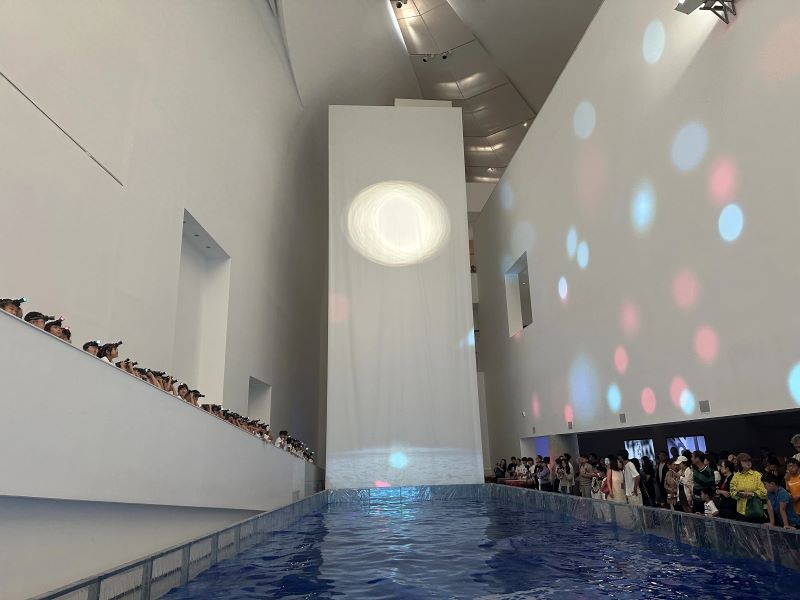Focusing on the evolution of energy technology and the advancement of civilization, and combining the scientific principles of nuclear fusion with artistic expression, the popular science exhibition “Energy and Civilization – Science and Art: Fusion Future” opened on September 14th at the Central Academy of Fine Arts Art Museum.
As China’s first museum-level science and art exhibition themed on “controlled nuclear fusion,” the exhibition allows visitors to intuitively experience the boundless potential of energy through an immersive experience, inspiring people’s imagination and reflection on the future energy era. “From the initial preparations to the final implementation, it took us nearly a year. The exhibition theme consists of two parts: the first, ‘Having the Power to Create the Sun,’ uses controlled nuclear fusion as its scientific foundation to illustrate its potential to fundamentally change the course of human civilization; the second, imagines what our lives would be like if controlled nuclear fusion were realized and electricity prices dropped to one cent,” said Zhang Zhaohong, a representative of the curatorial team and a teacher in the Sculpture Department of the Central Academy of Fine Arts.
The installation “Lightning” outside the museum visually depicts the ultra-high temperature required for nuclear fusion reactions, offering a lightning-like, shocking audio-visual experience and paying homage to Nikola Tesla’s coil from the late 19th century. The massive exhibit “Sea” within the exhibition hall, comprised of 50 tons of artificial seawater, vividly showcases the future vision of seawater being converted into energy. “Artificial Sun” uses fiber optic equipment to bring outdoor sunlight into the museum, then through focused projection, creates an “artificial sun” with a diameter of 5 meters, recreating the energy form of sunlight. These interactive installations break away from traditional popular science exhibition formats, transforming the abstract principles of nuclear fusion into a tangible sensory experience and guiding viewers to deeply reflect on the relationship between humanity and energy.
The exhibition also showcases numerous artifacts from nuclear fusion science, allowing visitors to appreciate the precision and mysteries of the physical world. From my country’s earliest tokamak, the KT-5, to the EAST fully superconducting tokamak, these objects and models document key milestones in China’s nuclear fusion research and demonstrate how this research has driven the development of global energy technology.
The exhibition also features several interactive activities. In the “Nuclear Fusion Principles Game,” visitors can manipulate virtual particle collisions and generate fusion reaction data in real time. The “Seawater Energy Conversion” device simulates seawater flow, helping visitors understand the physical transformation from seawater to nuclear energy.
The exhibition, jointly presented by the Central Academy of Fine Arts, the Energy Research Institute of the Hefei National Comprehensive Science Center, and the Hefei Municipal People’s Government, will run until October 12.












